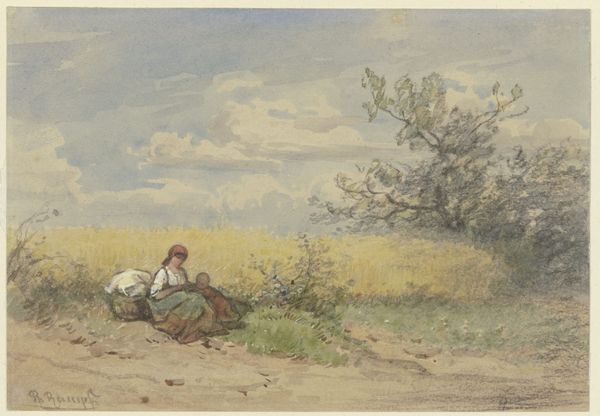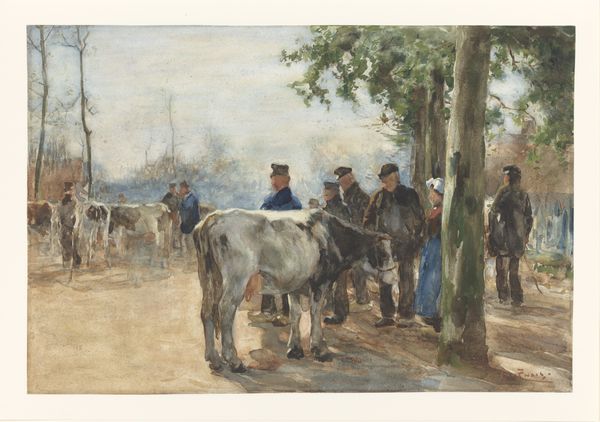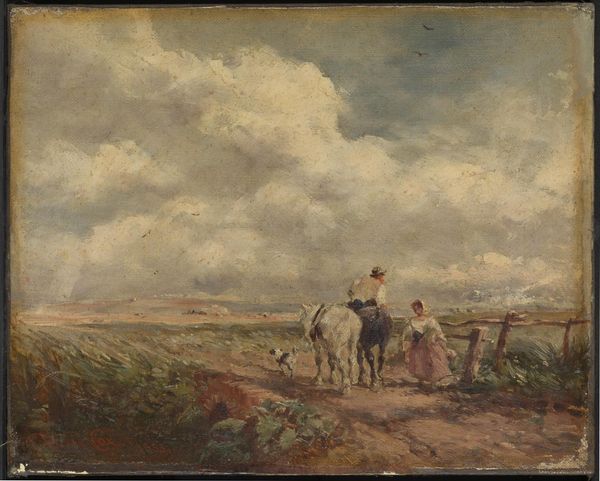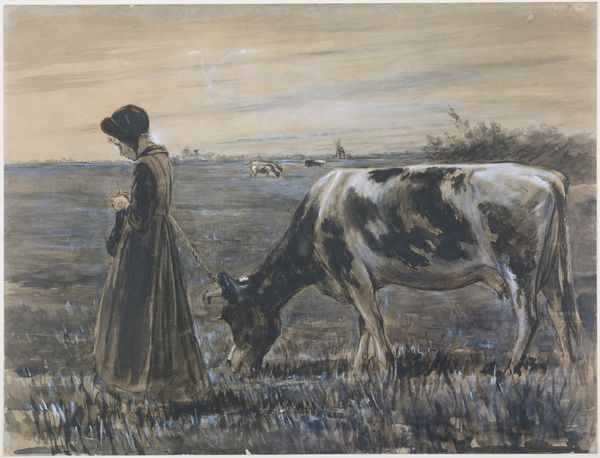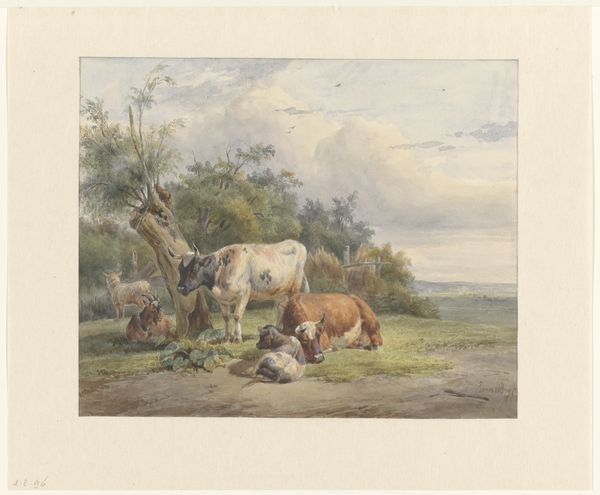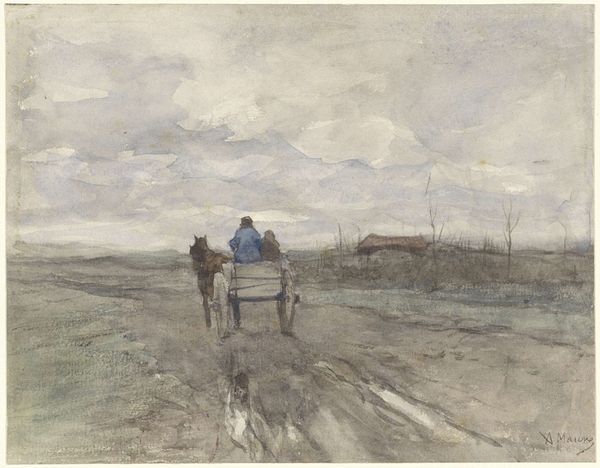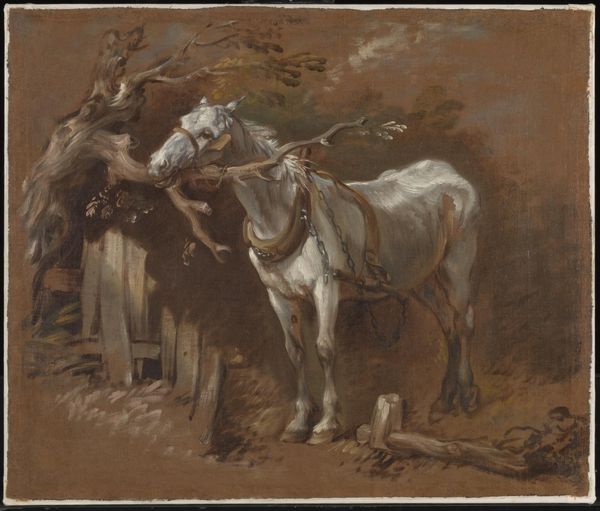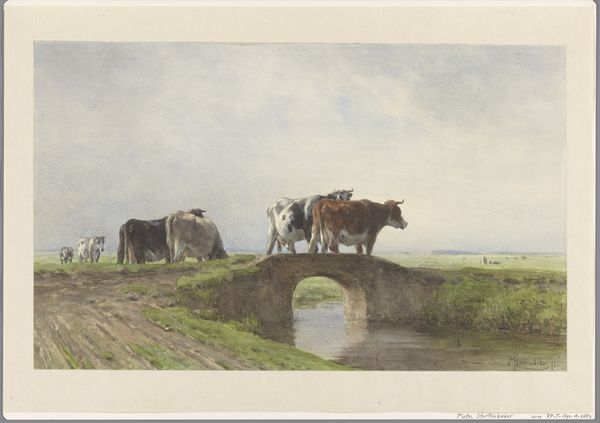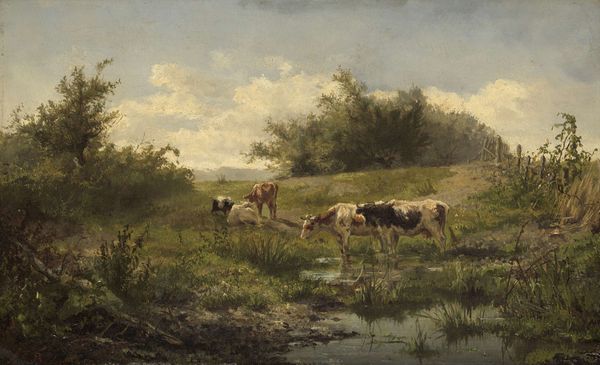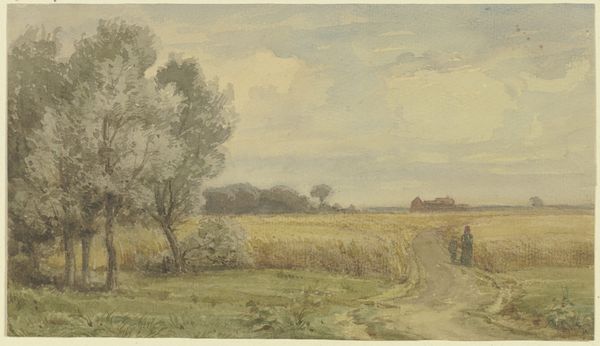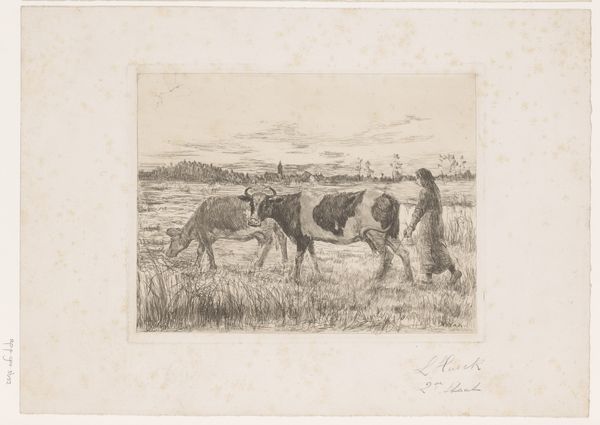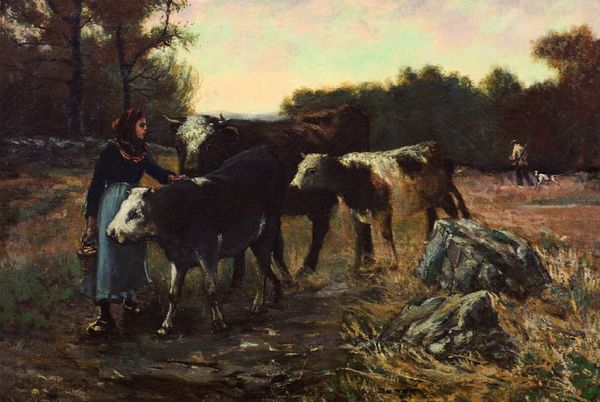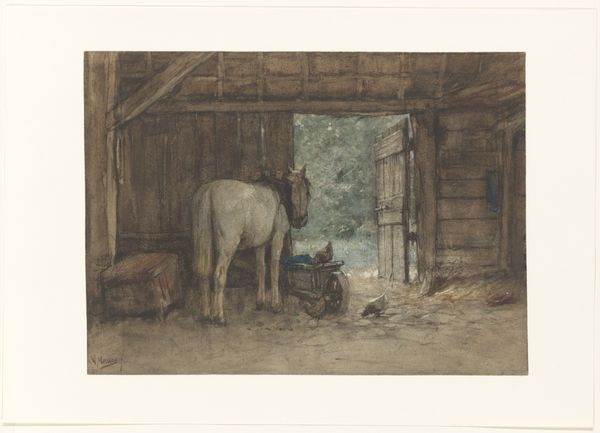
Dimensions: height 346 mm, width 499 mm
Copyright: Rijks Museum: Open Domain
Editor: Here we have Anton Mauve's watercolor, "Praatje op een landweg," created sometime between 1848 and 1888. It feels so quiet, a brief pause in the day captured with such delicate washes of color. What's your interpretation of this scene? Curator: It's a quintessential example of the Hague School's interest in rural life, isn't it? Look at how Mauve depicts the figures; they're not idealized or heroic, but ordinary people going about their daily routines. The figures are clearly members of the lower class of Dutch society during that period, a common subject of genre paintings and popular culture, which sought to depict them as simple and virtuous. Editor: I hadn't considered it in the context of genre paintings, I was too focused on the horses. Is there anything significant about their presence? Curator: The horses are integral to the image’s meaning, connecting these people to their livelihoods, their place in the rural economy. Consider too the relationship between the painting and the rising urban audiences consuming these images of "authentic" rural life. Do you see an inherent tension there? Editor: I see what you mean – it's like a nostalgic projection of a simpler past onto a present undergoing rapid industrialization. They likely couldn’t see any authenticity in these paintings. Curator: Precisely. And how do you think Mauve’s choice of watercolor contributes to this feeling? Editor: Well, it seems to enhance the romantic aspect. The medium softens the details, creating this diffused light which does romanticize the moment, especially for someone looking at it much later. It becomes idealized rather than something true. Curator: Exactly. It demonstrates how a seemingly simple genre scene reflects broader socio-political forces and anxieties of the period, playing into the way in which city life changed in that era. Editor: I see how deeply the setting and social context are embedded in the artwork; It gives new weight to something that looked simply idyllic at first glance. Curator: And hopefully inspires a greater appreciation for the dialogue between the painting and society, influencing each other in the long run.
Comments
No comments
Be the first to comment and join the conversation on the ultimate creative platform.
